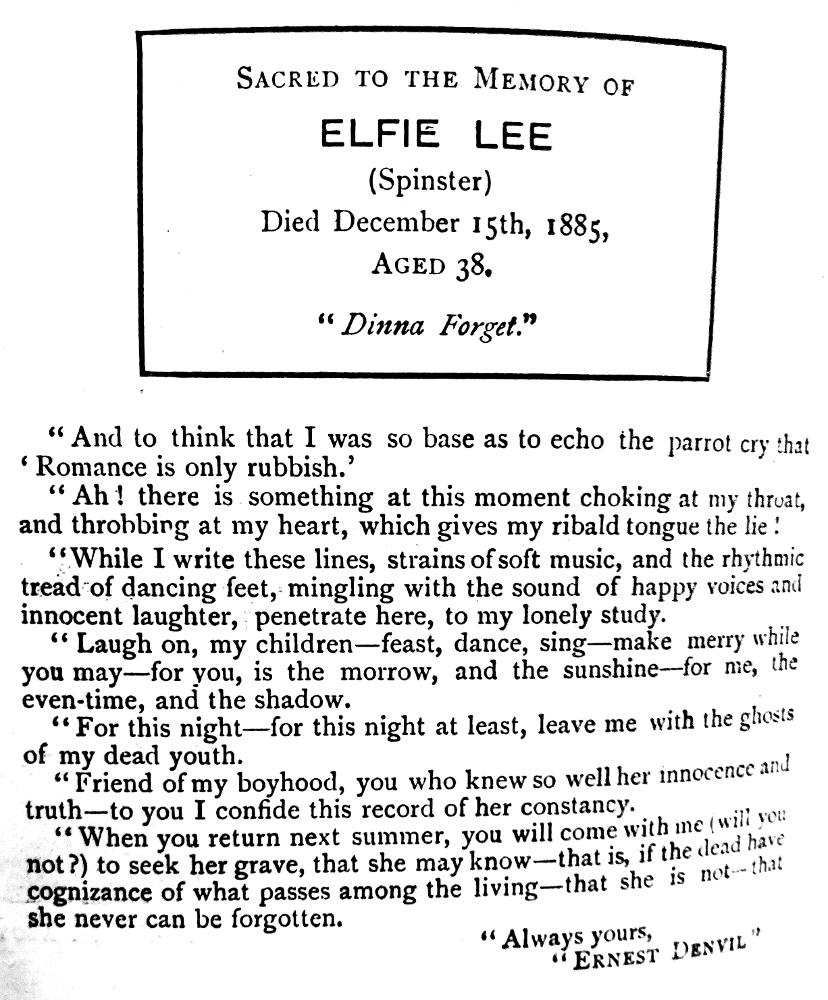
She fell upon her knees, flinging the bag before my feet. final illustration by Charles Green for John Coleman's "Elfie: A Barrister's Story," serialised in The Graphic for 31 July and 7 August 1886, Vol. XXXIV, Nos. 870 and 871 (p. 145). 12.4 cm high by 11.3 cm or 4 ⅞ by 4 ½ inches wide, framed. [Click on the images on this page to enlarge them.]
Passage Illustrated: Elfie's "floodgates of passion burst forth" upon the Narrator
Starting to her feet, she rushed over to the sideboard at the other end of the room. As she did so, her glorious hair fell down about her in great shining flakes, just as it did the first night I ever saw her. Seizing a large bag of claret-coloured leather in both hands, with her eyes ablaze, her cheeks on fire, her bosom heaving as though it would burst her bodice, she returned, exclaiming,
"Tak' it! It's filled wi' gowden sovereigns, and they're a' yours. Tak' 'em, and tak' me tae. Oh! tak' me, for I loo' ye, laddie — loo' ye mair nor yon stage quaen can ever do! Oh! tak' me wi' you! I'll wark for you by day, I'll watch over you by nicht, only tak' me, tak' me wi' you."
With that she fell upon her knees, flinging the bag before my feet, throwing her arms around me, bursting into tears, and sobbing as if her heart were about to break. [Instalment II, Part 3, "Romeo and Juliet," 145]
Commentary

Here Green realises the powerful scene that concludes the main action of Coleman's first-person retrospective narrative. He uses a simple detail in the foreground to alert the reader as to which scene in the text he has realised: the overturned purse. Thus, there is none of the ambiguity in the sixth illustration that marked the fourth, the uncaptioned headpiece in which the narrator, Ernest Denvil, is reading from a small, hardcover book (likely a duodecimo) to an enthralled young woman: that scene may either be the strolling player's reading contemporary English poetry (Browning and Tennyson) to juvenile actress Miss Victoria Fitzurse, or his reading the Romantic Waverley novels of Sir Walter Scott, Rob Roy or Guy Mannering, to the illiterate, utterly enthralled Elfie Lee. Whereas there we had no contextual clues as to which scene Green was realising, here the caption and the detail of the purse clarify that this is the highly emotional scene in which Elfie reacts with such vehemence to Ernest's supercilious criticism of her pipe-smoking. The scalding dialectal rebuke that he receives from Elfie's mother suddenly creates an epiphany for the narrator as he realizes the predicament that he has created for the young women. He tries to justify his imperceptiveness upon his youth: "I was impetuous, hot-blooded, and twenty-one."
Coleman now moves the story rapidly towards the denouement, when the middle-aged narrator, now a successful London barrister, receives news of Elfie's death in his study, even as his own children frolic outside.
Scanned image and text by Philip V. Allingham. [You may use this image without prior permission for any scholarly or educational purpose as long as you (1) credit the person who scanned the image and (2) link your document to this URL in a web document or cite the Victorian Web in a print one.]
Bibliography
Coleman, John. "Elfie: A Barrister's Story — Part Two." The Graphic Magazine. Illustrated by Charles Green, R. I. No. 871, Vol. 34. 7 August 1886, pp. 145-146.
Created 5 May 2025